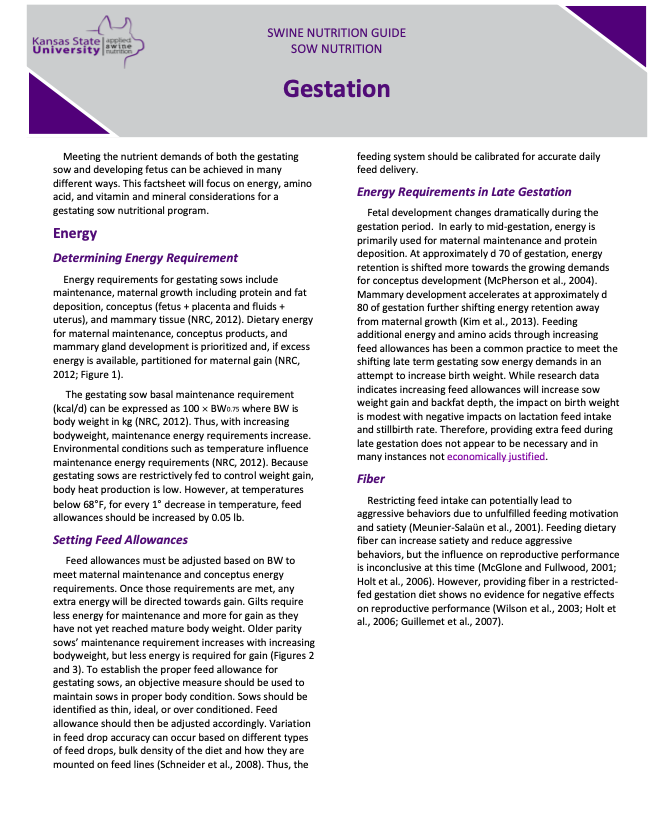Vitamins and Mineral
Ca and P
The phosphorous requirement for gestating sows is determined by requirements for maternal maintenance to replace minimum urinary and basal endogenous losses, maternal phosphorous retention for growth, and development of the conceptus and mammary glands (Bikker and Blok, 2017). Similar to energy and amino acids, the phosphorous requirement for gestating sows increase in late gestation to meet the demands for conceptus development and growth (Mahan et al., 2009). Parity can also dictate the phosphorous requirement as gilts and younger parity sows will require greater amounts of phosphorous on a daily basis to support growth as they have not yet reached mature bodyweight. Older parity sows will require less phosphorous to maintain bodyweight and body reserves. Calcium requirements increase in a similar manner as phosphorous in late gestation to support fetal development (Mahan et al., 2009). The relationship between calcium and phosphorous must be considered as both minerals are essential for development of the skeletal system, but excessive dietary Ca can inhibit P retention and absorption in the body (Létourneau-Montminy et al., 2012). Limited data exists on the calcium and phosphorous requirements for gestating sows. Research has shown that low calcium and phosphorous intake can result in lameness, while providing increased amounts of calcium and phosphorous has no effect on reproductive performance or structural soundness (Giesemann et al., 1998; Tan et al., 2016). It is recommended that gestating gilts and sows be provided 11.3 g/d of STTD phosphorous and 14.3 g/d of STTD calcium. These recommendations are above NRC (2012) levels to provide a margin of safety (Table 2). Furthermore, the use of phytase in gestating sow diets can improve the digestibility and retention of calcium and phosphorus (Lee et al., 2018). Therefore, phytase is recommended for use in gestating sow diets. Calcium and phosphorous release values should be applied in diet formulation when using phytase.
Trace Minerals
Because of variability in concentrations as well as bio-availability, copper, zinc, iron, iodine, manganese, chromium, and selenium are typically supplemented to gestation and lactation diets. Increased supplementation above these recommended levels and effect on reproductive performance is inconclusive and not recommended (Chen et al., 2016; Van Riet et al., 2018). Furthermore, organic sources of trace minerals in gestating sows have been researched, but results are inconclusive versus inorganic sources (Peters and Mahan, 2008; Bradley, 2010; Novais et al., 2016).
Vitamins
A standard practice is to provide additional vitamins that are not included in growing pig diets which include biotin, folic acid, pyridoxine and choline. Also carnitine, a vitamin like compound, is often included. In the KSU sow add pack, vitamin A and E are also provided to achieve higher levels than required by growing pigs. Providing these extra vitamins can be achieved by using a sow add pack or separate vitamin premix designed for sows only.
